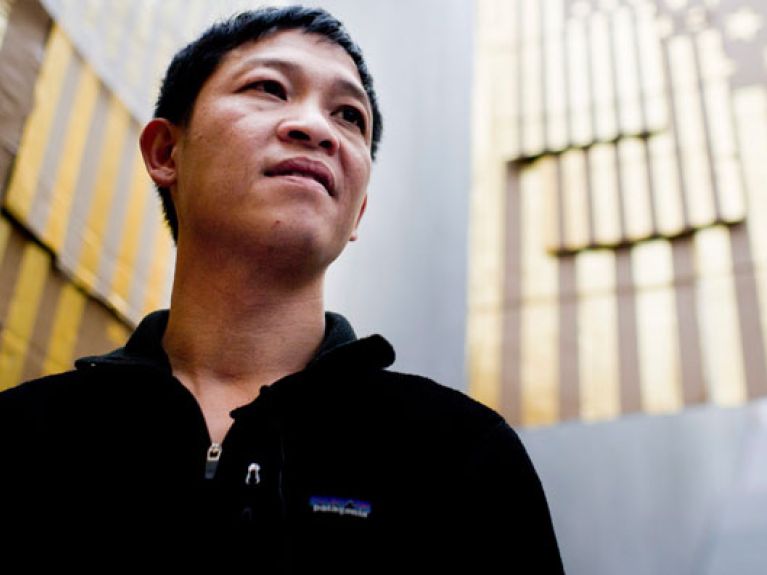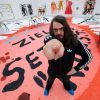Sharing Liberty
The Vietnamese artist Danh Vo has recreated a deconstructed version of the Statue of Liberty and launched a dynamic career from Berlin.

Danh Vo is a phenomenon, a gifted storyteller who uses objects to present his tales. He makes only small settings which can nevertheless sometimes have a very monumental impact, such as the deconstructed full-scale replica of the Statue of Liberty. They have an instant emotional effect, capturing the viewer immediately. It is not without reason that gallery owner Daniel Buchholz, who represents Danh Vo, calls him a “great deceiver”. The staged items may be simple but in these items is a vivid combination of the artist’s personal biography with the eras of the world, and of his personal fate with great political events. The focus jumps from near to far, from big to small and vice versa as in all good novels – but this tells of real life in which man can be buffeted around in turbulent water like a small piece of wood.
That’s just what happened to Danh Vo, quite literally, not just in a metaphorical sense. He was born in Vietnam in 1975, the year of South Vietnam’s capitulation and the Communists’ victory. Four years later his family escaped in a handmade boat, setting off along with hundreds of other boat people heading for the West, the USA. The small boat was rescued in the Pacific by a Danish freighter. Danh Vo’s family reached Europe and settled in Denmark. The vision of great fortune in the United States is now a family tale. So if, three decades later, Danh Vo recreates the Statue of Liberty in a deconstructed version, has it cast in copper just as the original and presents it in exhibitions throughout the entire world with the title We the People, then the dream of a stranded family is also revived.
Danh Vo studied art at the Royal Academy of Fine Art in Copenhagen, then switched to the State Academy of Fine Arts (Städelschule) in Frankfurt. In 2005 he moved to Berlin, as so many other artists do, from where he began an international career. Today his works are highly valued and he receives prizes and holds major exhibitions. His exhibition “Ydob eht ni mraw si ti” (“It is warm in the body” read backward) opened in Cologne’s Museum Ludwig in August 2015. Danh Vo is representing Denmark at this year’s Venice Biennale, featured in the Danish Pavilion in the Giardini. He is guest curator of an exhibition at the Punta della Dogana featuring his own works and works from the private collection of the Frenchman François Pinault. Danh Vo has thus finally become a star and in a few years one of the most expensive artists.
Danh Vo is currently living in Mexico City, but his art can come into existence anywhere – whether it’s Copenhagen, Frankfurt, Berlin or Mexico. Questions of identity and belonging can arise anywhere. The artist takes with him to each place, as if in a nutshell, the things that shape him, his family history. His family provides him with the objects for his installations or he buys them at auctions. With them, Danh Vo is forging a link from the personal to French colonial rule and the Vietnam War. The photograph of the French missionary on the eve of his departure for Vietnam is linked with his own discarded Catholicism. The chandelier comes from Paris’s Hotel Majestic, in which the five-point plan for Vietnam’s pacification was signed in 1973 which led to the artist’s family fleeing the country. He has recently been integrating other artists into his exhibition, showing works by the American photographer Peter Hujar and the artist Martin Wong, who both died of Aids. The observer follows with fascination these tracks as well, the connections into the gay sub-culture. And yet he senses that Danh Vo is playing a game with him, that everything is a prop. Despite all the splendour, the aura is casting its palest light. Could the power leave the great deceiver yet again just at the moment of his greatest success? ▪

